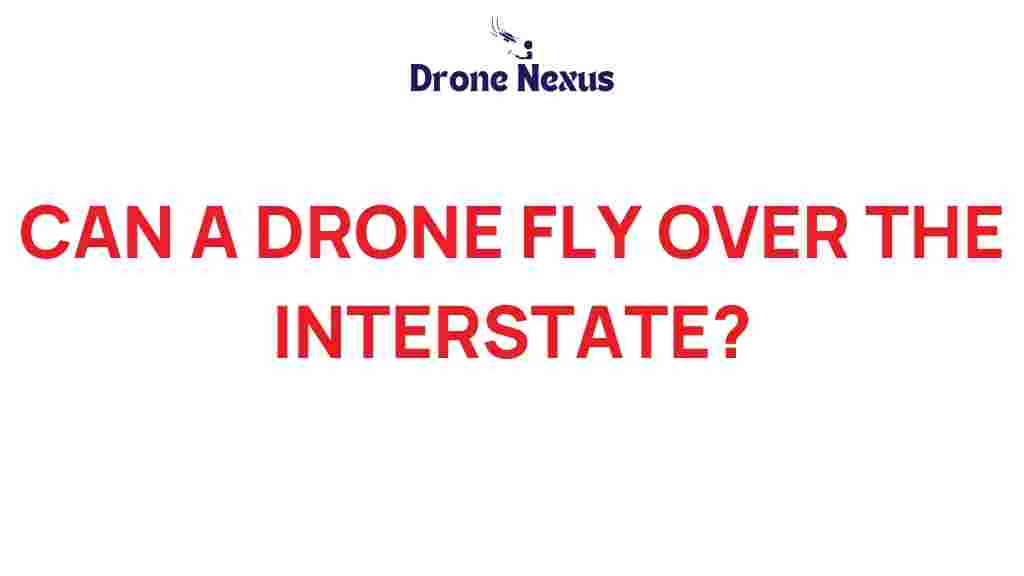Can Drones Legally Navigate Over Interstate Highways?
Drones have revolutionized various industries, including photography, agriculture, and logistics. However, one question often arises among drone enthusiasts and operators: Can drones legally navigate over interstate highways? This is a complex topic influenced by federal regulations, state laws, and safety concerns. In this article, we will explore the legal landscape surrounding drone operations over highways, how to navigate these regulations, and provide essential tips for responsible drone usage.
The Legal Framework for Drones
The operation of drones is primarily governed by the Federal Aviation Administration (FAA) in the United States. The FAA has established rules and regulations that drone operators must follow, especially when navigating over populated areas or interstate highways.
Federal Regulations
Under Title 14 of the Code of Federal Regulations, Part 107, the FAA outlines the essential rules for operating small unmanned aircraft systems (sUAS). Here are some key points:
- Remote Pilot Certificate: Operators must possess a Remote Pilot Certificate issued by the FAA.
- Altitude Limits: Drones cannot fly higher than 400 feet above ground level unless within 400 feet of a structure.
- Visual Line of Sight: Pilots must maintain visual line of sight with their drones at all times.
- Flight Restrictions: Drones cannot fly over people not involved in the operation, and certain airspace may be restricted.
When it comes to interstate highways, the FAA does not explicitly prohibit drone flights over them. However, operators must adhere to the above regulations and consider the safety of highway users.
State and Local Regulations
In addition to federal rules, individual states may impose their own regulations regarding drone operations. Here are some common state-level considerations:
- Privacy Laws: Some states have laws protecting individuals’ privacy that may restrict drone usage in certain areas.
- Local Ordinances: Municipalities may have specific laws regarding where drones can and cannot fly.
- Highway Safety Regulations: States may have specific laws concerning the operation of drones near or over highways to ensure public safety.
It is crucial for drone operators to research and understand the local laws where they intend to fly, as violations can result in fines or other penalties.
Steps to Legally Navigate Drones Over Interstate Highways
If you are considering flying a drone over an interstate highway, follow these steps to ensure compliance with regulations:
Step 1: Obtain Necessary Certifications
Before operating a drone, ensure you have obtained your Remote Pilot Certificate from the FAA. This involves passing a knowledge test that covers topics such as airspace classification, weather, and drone operations.
Step 2: Check Local Regulations
Research the specific laws and regulations in your state and local area. Some states may have restrictions on flying over highways, so it’s essential to consult the local government or law enforcement agencies.
Step 3: Plan Your Flight Path
Before taking off, plan your flight path carefully. Utilize tools like drone flight apps to map out your route and ensure you remain within legal airspace. Always have a contingency plan for emergencies.
Step 4: Inform Local Authorities
If your flight plan involves navigating over heavily trafficked highways, consider informing local authorities, especially if you are conducting commercial operations. This can help avoid potential misunderstandings and ensure public safety.
Step 5: Conduct a Pre-Flight Checklist
Before taking off, perform a thorough pre-flight checklist. This should include:
- Checking weather conditions
- Inspecting the drone for any mechanical issues
- Ensuring the battery is fully charged
- Verifying that the GPS and other navigation systems are functioning properly
Step 6: Fly Responsibly
During the flight, adhere to all FAA regulations, maintain visual line of sight, and respect the privacy of individuals below. If you encounter any issues, be prepared to land the drone safely.
Troubleshooting Tips for Drone Operations
Even with careful planning, drone operations can sometimes encounter challenges. Here are some troubleshooting tips:
Common Issues
- Loss of Signal: If you lose connection with your drone, try to remain calm. Most drones have a return-to-home feature that will automatically bring the drone back to its launch point.
- Battery Issues: Monitor your battery levels closely. Always land your drone with at least 20% battery remaining to avoid unexpected crashes.
- Weather Conditions: Be aware of changing weather conditions. If winds become too strong or rain begins, it’s best to land your drone immediately.
Staying Informed
Join online communities or forums dedicated to drone enthusiasts. These platforms can provide valuable insights and solutions to common problems faced by drone operators. Additionally, keeping up to date with FAA announcements and local regulations is vital.
Conclusion
In summary, navigating drones over interstate highways is possible, provided that operators adhere to federal regulations and are aware of state and local laws. By obtaining the necessary certifications, carefully planning flight paths, and flying responsibly, drone enthusiasts can enjoy the benefits of this technology while ensuring safety and compliance.
As the drone industry continues to evolve, staying informed and adaptable will be essential for all operators. For more information on drone regulations and best practices, visit the FAA website. Happy flying!
This article is in the category Safety and created by DroneNexus Team
